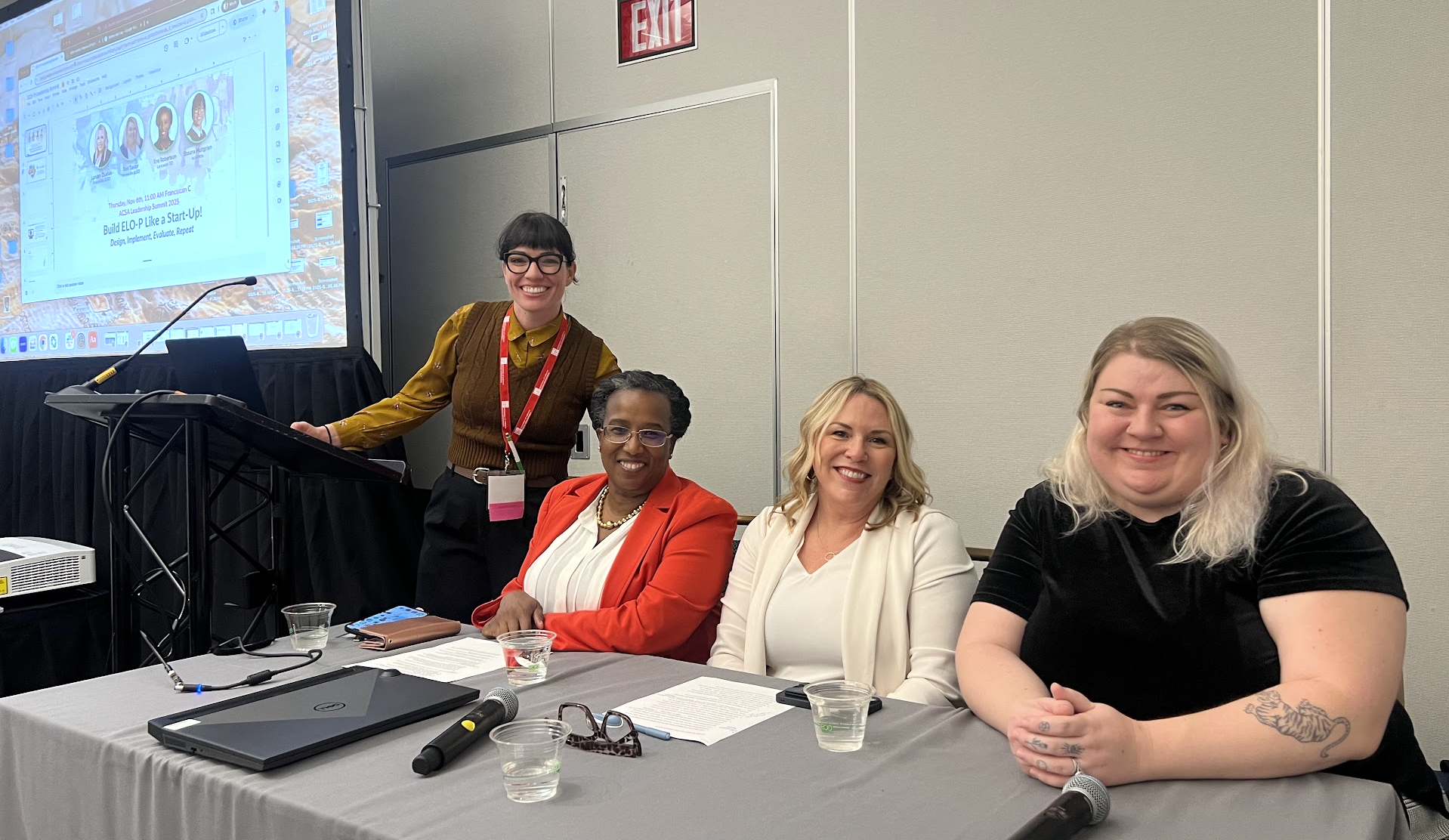At the 2025 ACSA Leadership Summit in San Francisco, we sat down with three leaders who are shaping what the future of Expanded Learning looks like in California. The panel, moderated by me, Shauna Hultgrien of 6crickets, featured:
- Erie Robertson, Director of Expanded Learning at Lancaster School District
- Lunden Dueñas, Expanded Learning Coordinator at Marysville Joint Union School District
- Tori Taylor, ELO-P Communications Coordinator at Marysville Joint Union School District
Together, these Expanded Learning all-stars shared what it takes to build an ELO-P that grows, adapts, and centers students—especially when the pace of change feels more like a start-up than a school district: fast-moving, resource-tight, and nonstop innovation.

Building Relationships–It Matters
ELO-P doesn’t come nice, neat, and packaged. It starts and grows in the middle of messy, real-world constraints: staffing shortages, space conflicts, compliance demands, and growing student needs.
Erie highlighted her three biggest challenges in getting Lancaster’s Expanded Learning programs off the ground: “staffing and training, space and coordination, and maintaining high-interest activities for students.”
Lunden echoed that space coordination remains one of the universal challenges in Expanded Learning. As Erie said, “If you’re in ELO-P, you know the struggle!” But she emphasized the solution, “It’s about building relationships,” with teachers, facilities, the district, and parents.
Lunden applied that collaborative effort at Marysville, “Because we were growing so big… our district wasn’t really able to keep up and carry that load…we worked really diligently with our staff. We built relationships.”

Program Implementation & Growth: Progress Over Perfection
These leaders share a core belief: big improvements happen because someone was brave enough to start small. A start-up mindset prioritizes momentum over perfection. Lunden brought that philosophy to life with an analogy: “You could have a ladder with a beautiful rung, but it’ll just have the one. Or you can have a ladder with rungs going all the way up that work, but might not be so pretty at the start.”
And they acted on that philosophy. “Every intersession, every program…We change things. We tweak things,” she explained. That iterative approach pays off, “enrollment for summer intersession was at 468, and now we’re at 1000.”
Erie reinforced her own philosophy: “I believe in throwing the spaghetti at the wall and seeing what sticks.” For her team, experimentation isn’t chaos—it’s commitment. Try. Observe. Adjust. Repeat. The payoff speaks for itself. At Lancaster, Erie shared, “we have grown exponentially.”

Students at the Center, From Morning to Evening
This growth isn’t accidental; it’s intentional. Erie reminded the room, “The students are the same from 6 in the morning to 6 in the afternoon, and we want to give our students the absolute best.”
Lunden’s team reinforces that mindset from the start: “We make sure our vision and mission are out there at the school sites so they [site staff, teachers, administrators] know what we’re doing before and after school really helps develop those educational skills…these are the same students.”
This perspective shapes every operational decision and drives equitable access to programs across sites. Erie shared her team’s mission, “Equitable access for us means removing absolutely every single barrier… no matter what that barrier is…any students with medical needs are able to attend because we secure a nurse…we offer transportation for summer school and intersession.”
Tori added how structure supports fairness: “We’re structuring teacher offerings in categories and ensuring that they meet requirements… this is how we’re ensuring equity at every site.”
Whether families face scheduling conflicts, language needs, transportation challenges or technology hurdles, the commitment is the same: identify the barrier, remove it, and ensure every child can participate meaningfully.

Creativity Fuels Engagement
Start-up thinking isn’t only about systems and scalability, it’s about designing experiences students genuinely want. That is where Tori shines: “Make it fun! Thinking of themes, bringing in assemblies, and finding places kids have never gone before—that’s my favorite part.”
These leaders build programs rooted in curiosity and joy, high-interest activities, culturally connected offerings and opportunities for every student to explore something new. As Erie put it, “If there is a high-interest activity… we talk about it, then we start to implement it,” because “we’re all about opportunities and experiences.”
Dream Big, Iterate Often
The session closed with advice from each of our panelists:
Erie offered the reminder every ELO-P leader needs taped to their monitor: “Not every plan is going to go the way you want… you stop, you reflect, and then you do it again a different way.”
Lunden offered practical advice: “Work closely with your departments, develop a mission and vision for your programs. Then they’re more likely to reduce those roadblocks.”
Tori added the mantra many in the room needed to hear: “Progress over perfection”
These leaders are proving that when ELO-P evolves like a start-up – experimental, student-centered, and endlessly iterative – kids gain access to experiences that shape who they become.

Want to hear more?
You can watch the full session recording by filling out this short form:
Want a Better Way to Build Bold?
If you’d like help building systems that support this kind of growth without drowning in logistics, 6crickets is here to help.
 shauna@6crickets.com | [Schedule a conversation]
shauna@6crickets.com | [Schedule a conversation]
Yours in Education,
6crickets Team

